
Vincent van Gogh Painting Reproductions 7 of 18
1853-1890
Dutch Post-Impressionist Painter
416 Vincent van Gogh Paintings
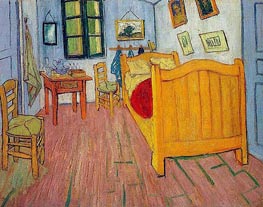
Vincent's Bedroom in Arles 1888
Oil Painting
$864
$864
Canvas Print
$74.04
$74.04
SKU: VVG-1246
Vincent van Gogh
Original Size: 72 x 90 cm
Van Gogh Museum, Amsterdam, Netherlands
Vincent van Gogh
Original Size: 72 x 90 cm
Van Gogh Museum, Amsterdam, Netherlands
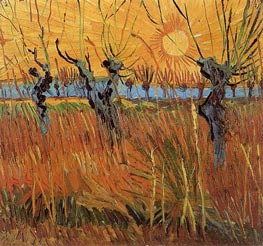
Willows at Sunset 1888
Oil Painting
$267
$267
Canvas Print
$61.76
$61.76
SKU: VVG-1247
Vincent van Gogh
Original Size: 31.5 x 34.5 cm
Kroller-Mueller Museum, Otterlo, Netherlands
Vincent van Gogh
Original Size: 31.5 x 34.5 cm
Kroller-Mueller Museum, Otterlo, Netherlands
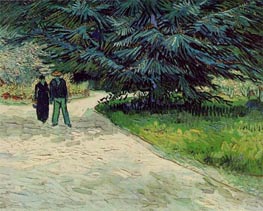
Couple in the Park, Arles 1888
Oil Painting
$866
$866
Canvas Print
$74.21
$74.21
SKU: VVG-1248
Vincent van Gogh
Original Size: 73 x 92 cm
Private Collection
Vincent van Gogh
Original Size: 73 x 92 cm
Private Collection
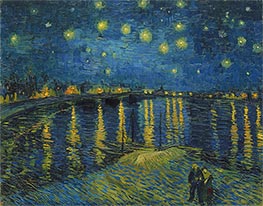
Starry Night over the Rhone 1888
Oil Painting
$865
$865
Canvas Print
$72.00
$72.00
SKU: VVG-1249
Vincent van Gogh
Original Size: 72.5 x 92 cm
Musee d'Orsay, Paris, France
Vincent van Gogh
Original Size: 72.5 x 92 cm
Musee d'Orsay, Paris, France
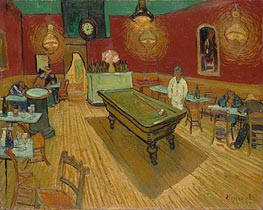
The Night Cafe in the Place Lamartine in Arles 1888
Oil Painting
$906
$906
Canvas Print
$74.55
$74.55
SKU: VVG-1250
Vincent van Gogh
Original Size: 72.4 x 92.1 cm
Yale University Art Gallery, Connecticut, USA
Vincent van Gogh
Original Size: 72.4 x 92.1 cm
Yale University Art Gallery, Connecticut, USA
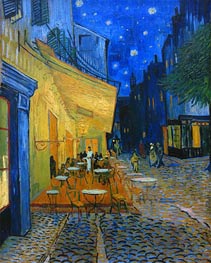
The Cafe Terrace on the Place du Forum, Arles 1888
Oil Painting
$1097
$1097
Canvas Print
$75.57
$75.57
SKU: VVG-1251
Vincent van Gogh
Original Size: 81 x 65.5 cm
Kroller-Mueller Museum, Otterlo, Netherlands
Vincent van Gogh
Original Size: 81 x 65.5 cm
Kroller-Mueller Museum, Otterlo, Netherlands
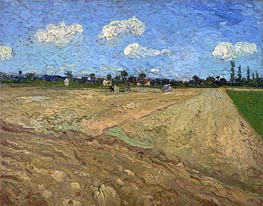
The Plowed Field 1888
Oil Painting
$817
$817
Canvas Print
$73.19
$73.19
SKU: VVG-1252
Vincent van Gogh
Original Size: 65 x 81 cm
Van Gogh Museum, Amsterdam, Netherlands
Vincent van Gogh
Original Size: 65 x 81 cm
Van Gogh Museum, Amsterdam, Netherlands
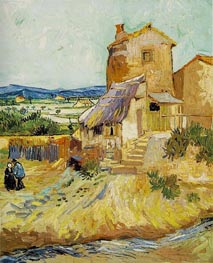
The Old Mill 1888
Oil Painting
$597
$597
Canvas Print
$77.61
$77.61
SKU: VVG-1253
Vincent van Gogh
Original Size: 83.2 x 73 cm
Albright-Knox Art Gallery, Buffalo, USA
Vincent van Gogh
Original Size: 83.2 x 73 cm
Albright-Knox Art Gallery, Buffalo, USA
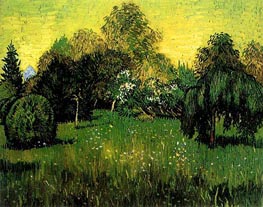
Public Park with Weeping Willow 1888
Oil Painting
$817
$817
Canvas Print
$74.21
$74.21
SKU: VVG-1254
Vincent van Gogh
Original Size: 73 x 92 cm
Art Institute of Chicago, Illinois, USA
Vincent van Gogh
Original Size: 73 x 92 cm
Art Institute of Chicago, Illinois, USA
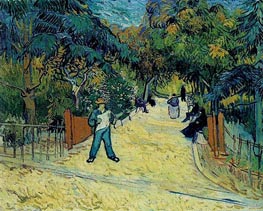
Entrance to the Public Garden in Arles 1888
Oil Painting
$849
$849
Canvas Print
$73.19
$73.19
SKU: VVG-1255
Vincent van Gogh
Original Size: 72.4 x 90.8 cm
Phillips Collection, Washington, USA
Vincent van Gogh
Original Size: 72.4 x 90.8 cm
Phillips Collection, Washington, USA

A Lane in the Public Garden at Arles 1888
Oil Painting
$817
$817
Canvas Print
$73.53
$73.53
SKU: VVG-1256
Vincent van Gogh
Original Size: 73 x 92 cm
Kroller-Mueller Museum, Otterlo, Netherlands
Vincent van Gogh
Original Size: 73 x 92 cm
Kroller-Mueller Museum, Otterlo, Netherlands
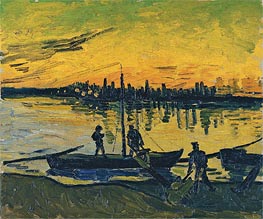
Coal Barges 1888
Oil Painting
$544
$544
Canvas Print
$77.95
$77.95
SKU: VVG-1257
Vincent van Gogh
Original Size: 53.5 x 64 cm
Thyssen-Bornemisza Museum, Madrid, Spain
Vincent van Gogh
Original Size: 53.5 x 64 cm
Thyssen-Bornemisza Museum, Madrid, Spain
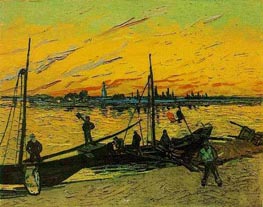
Coal Barges 1888
Oil Painting
$788
$788
SKU: VVG-1258
Vincent van Gogh
Original Size: 71 x 95 cm
Private Collection
Vincent van Gogh
Original Size: 71 x 95 cm
Private Collection
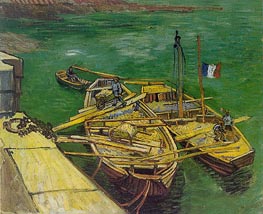
Quay with Men Unloading Sand Barges 1888
Oil Painting
$687
$687
SKU: VVG-1259
Vincent van Gogh
Original Size: 55 x 66.2 cm
Museum Folkwang, Essen, Germany
Vincent van Gogh
Original Size: 55 x 66.2 cm
Museum Folkwang, Essen, Germany
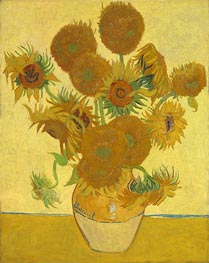
Still Life: Vase with Fourteen Sunflowers 1888
Oil Painting
$823
$823
Canvas Print
$73.70
$73.70
SKU: VVG-1260
Vincent van Gogh
Original Size: 92.1 x 73 cm
National Gallery, London, UK
Vincent van Gogh
Original Size: 92.1 x 73 cm
National Gallery, London, UK

Three Sunflowers in a Vase 1888
Oil Painting
$744
$744
Canvas Print
$74.21
$74.21
SKU: VVG-1261
Vincent van Gogh
Original Size: 73 x 58 cm
Private Collection
Vincent van Gogh
Original Size: 73 x 58 cm
Private Collection
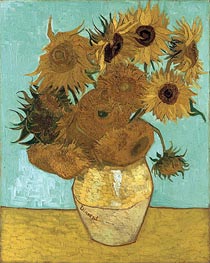
Still Life - Vase with Twelve Sunflowers 1888
Oil Painting
$828
$828
Canvas Print
$74.21
$74.21
SKU: VVG-1262
Vincent van Gogh
Original Size: 92 x 73 cm
Neue Pinakothek, Munich, Germany
Vincent van Gogh
Original Size: 92 x 73 cm
Neue Pinakothek, Munich, Germany
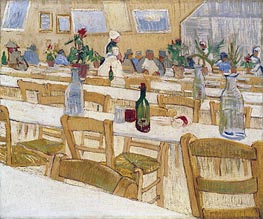
Interior of the Restaurant Carrel in Arles 1887
Oil Painting
$592
$592
Canvas Print
$77.95
$77.95
SKU: VVG-1263
Vincent van Gogh
Original Size: 51.1 x 65.4 cm
Private Collection
Vincent van Gogh
Original Size: 51.1 x 65.4 cm
Private Collection
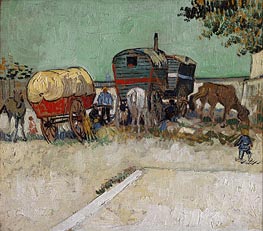
Encampment of Gypsies with Caravans 1888
Oil Painting
$408
$408
Canvas Print
$71.02
$71.02
SKU: VVG-1264
Vincent van Gogh
Original Size: 45 x 51 cm
Musee d'Orsay, Paris, France
Vincent van Gogh
Original Size: 45 x 51 cm
Musee d'Orsay, Paris, France
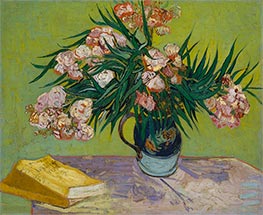
Still Life - Vase with Oleanders and Books 1888
Oil Painting
$765
$765
Canvas Print
$76.59
$76.59
SKU: VVG-1265
Vincent van Gogh
Original Size: 60.3 x 73.7 cm
Metropolitan Museum of Art, New York, USA
Vincent van Gogh
Original Size: 60.3 x 73.7 cm
Metropolitan Museum of Art, New York, USA
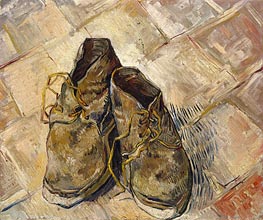
A Pair of Shoes 1888
Oil Painting
$495
$495
Canvas Print
$78.07
$78.07
SKU: VVG-1266
Vincent van Gogh
Original Size: 45.7 x 55.2 cm
Metropolitan Museum of Art, New York, USA
Vincent van Gogh
Original Size: 45.7 x 55.2 cm
Metropolitan Museum of Art, New York, USA
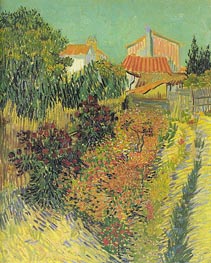
Garden Behind a House August 188
Oil Painting
$565
$565
SKU: VVG-1267
Vincent van Gogh
Original Size: unknown
Kunsthaus, Zurich, Switzerland
Vincent van Gogh
Original Size: unknown
Kunsthaus, Zurich, Switzerland
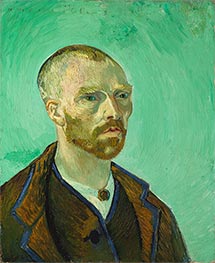
Self-Portrait (Dedicated to Paul Gauguin) September
Oil Painting
$556
$556
Canvas Print
$94.39
$94.39
SKU: VVG-1268
Vincent van Gogh
Original Size: 61 x 50 cm
Fogg Art Museum at Harvard University, Massachusetts, USA
Vincent van Gogh
Original Size: 61 x 50 cm
Fogg Art Museum at Harvard University, Massachusetts, USA
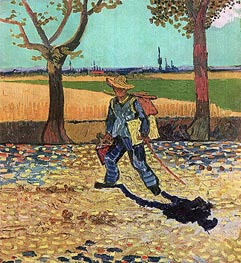
The Painter on His Way to Work July 1888
Oil Painting
$436
$436
SKU: VVG-1269
Vincent van Gogh
Original Size: 48 x 44 cm
Destroyed in World War II
Vincent van Gogh
Original Size: 48 x 44 cm
Destroyed in World War II